1864 2C - Questions for the Experts
 CPJ
Posts: 78 ✭✭✭
CPJ
Posts: 78 ✭✭✭
I've been imaging a 1864 Large Motto 2C and have come across several features I hoping to get assistance in understanding.
1) What causes the mottled appearance on the obverse? I'd suspect a difference in the metal, but then I'd expect the same on the reverse.
2) The obverse and reverse both have what at first glance I thought were die cracks. However, on closer examination, I'm seeing both raised and incuse effects. The die cracks I've typically seen are raised on the coin. Some of these are raised and then transition to incuse. Is this a cracked die in combination with debris on the die?
3) The attribution for the coin. I'm seeing doubling on the word United and in the E of America. I said in one of my Capped Bust Half posts that this saved me an hour. Well, I've spent well over that and am not even close to finding a comprehensive listing of these. I can find seemingly thousands for sale, though.
Your insight would be greatly appreciated!
First, the images of the full obverse and reverse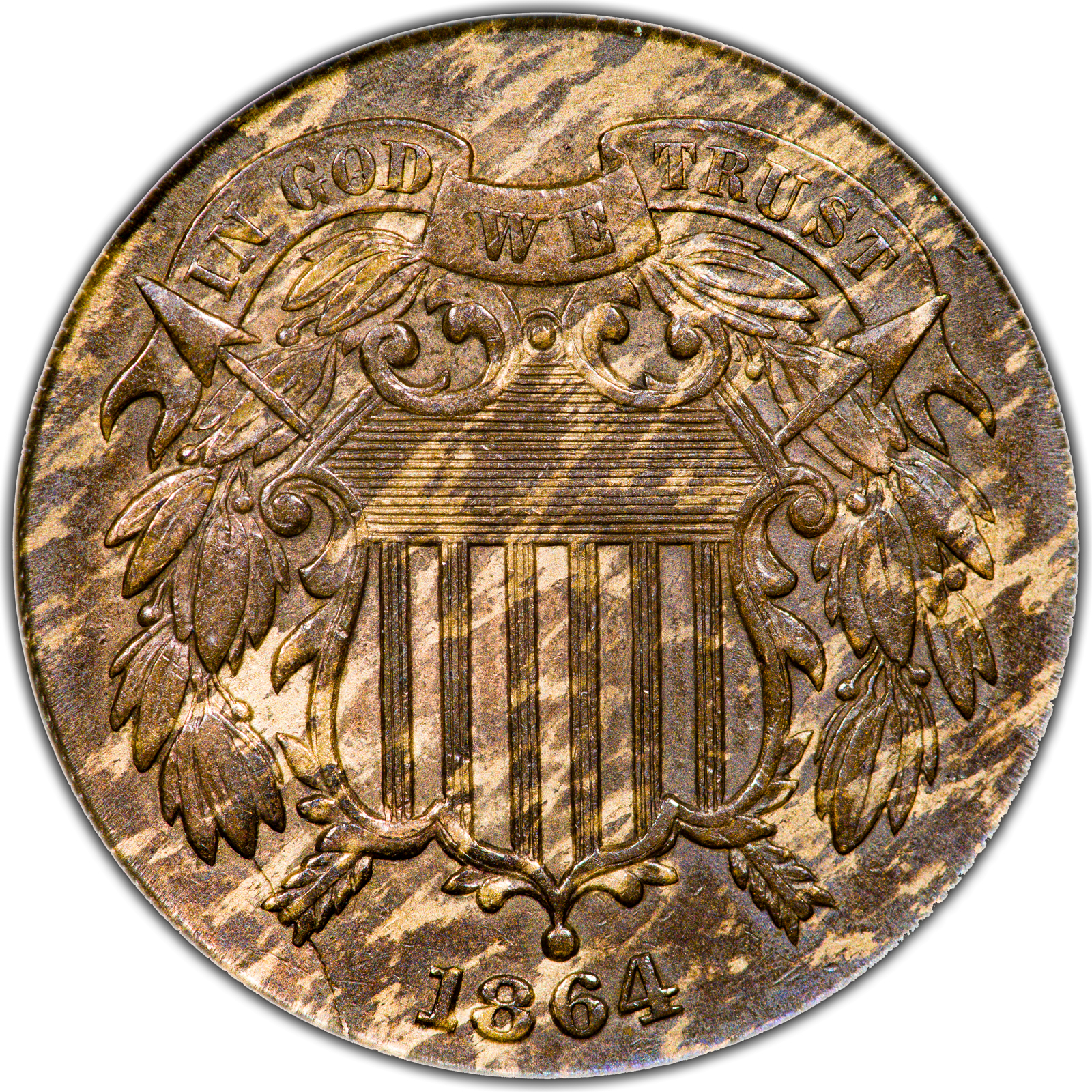
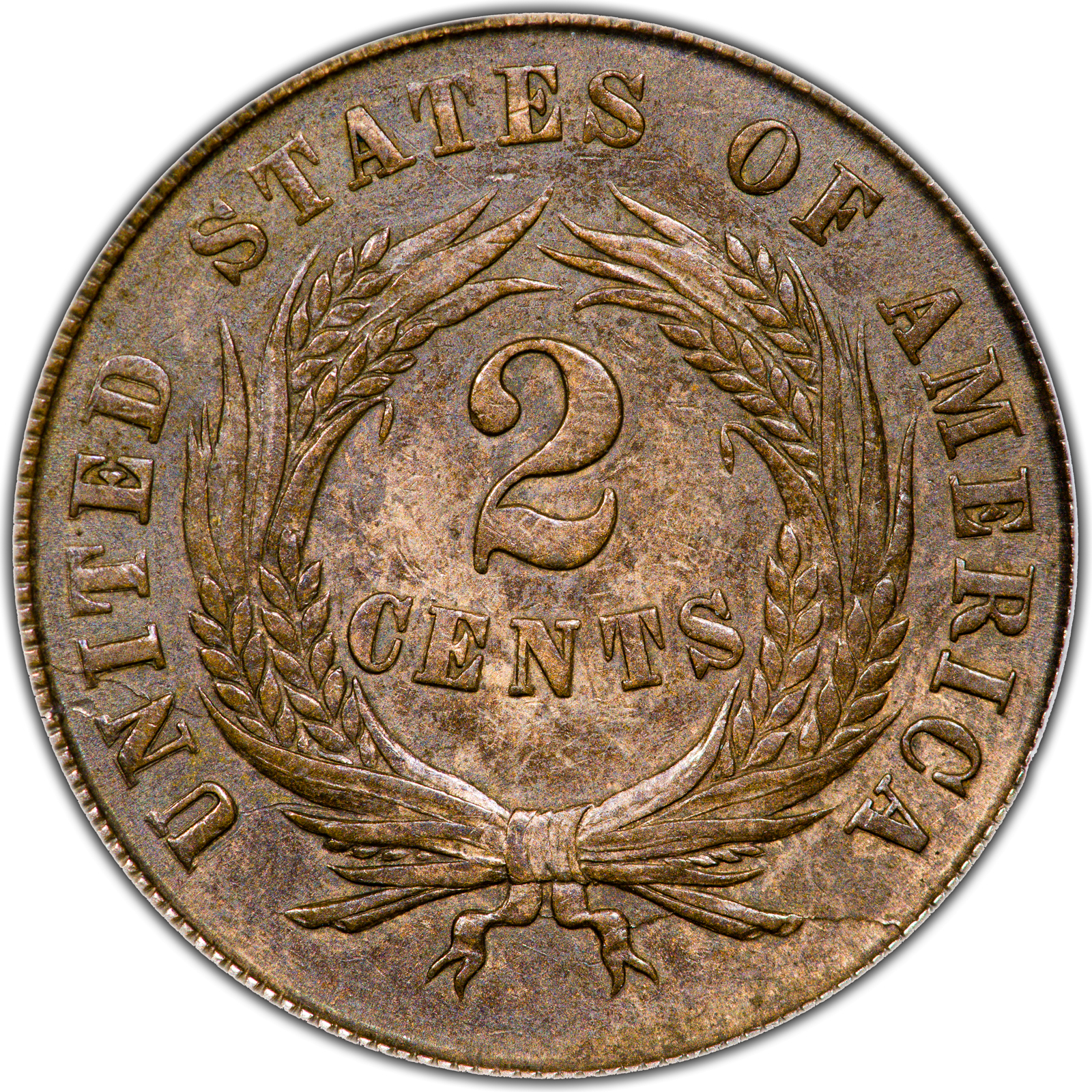
On to the incuse and raised surface features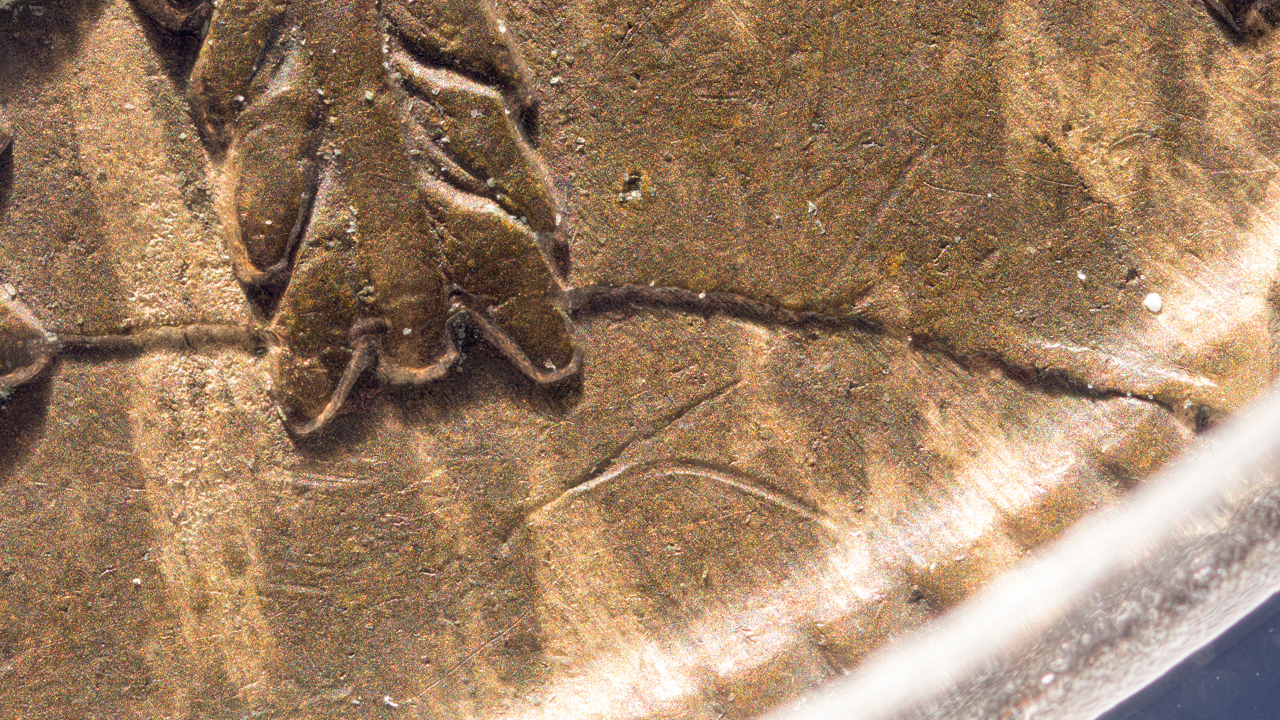
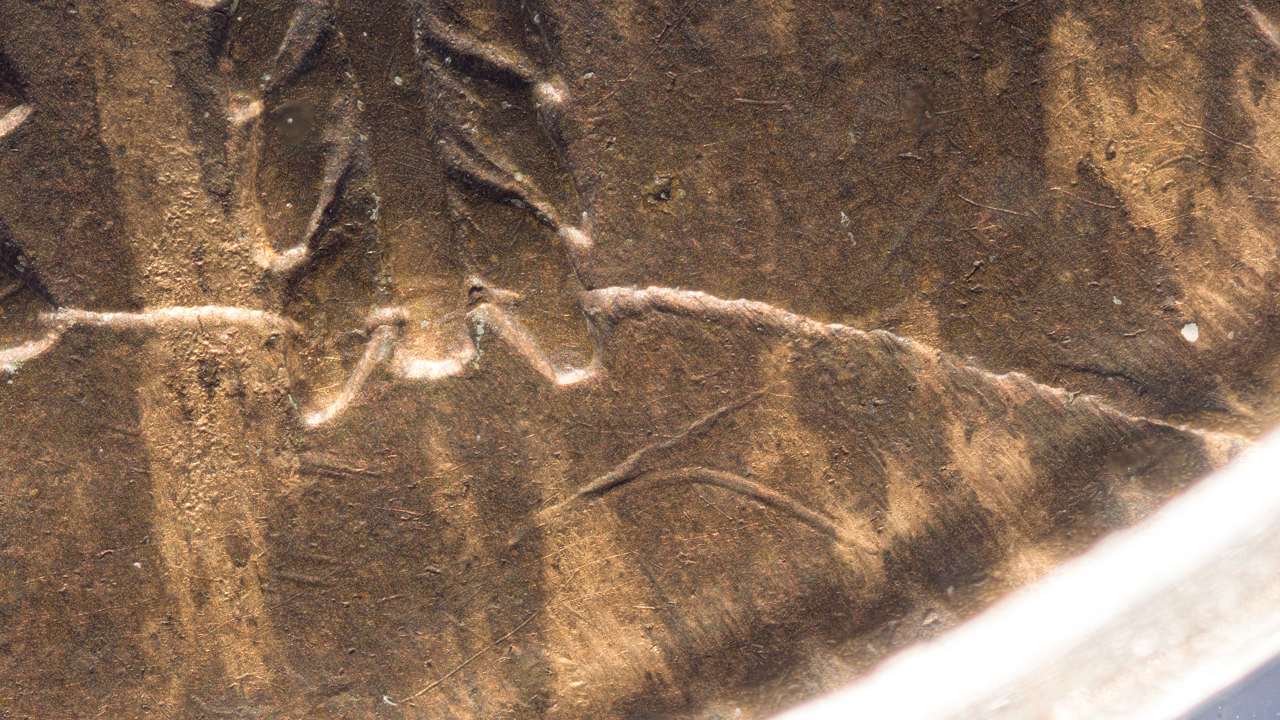
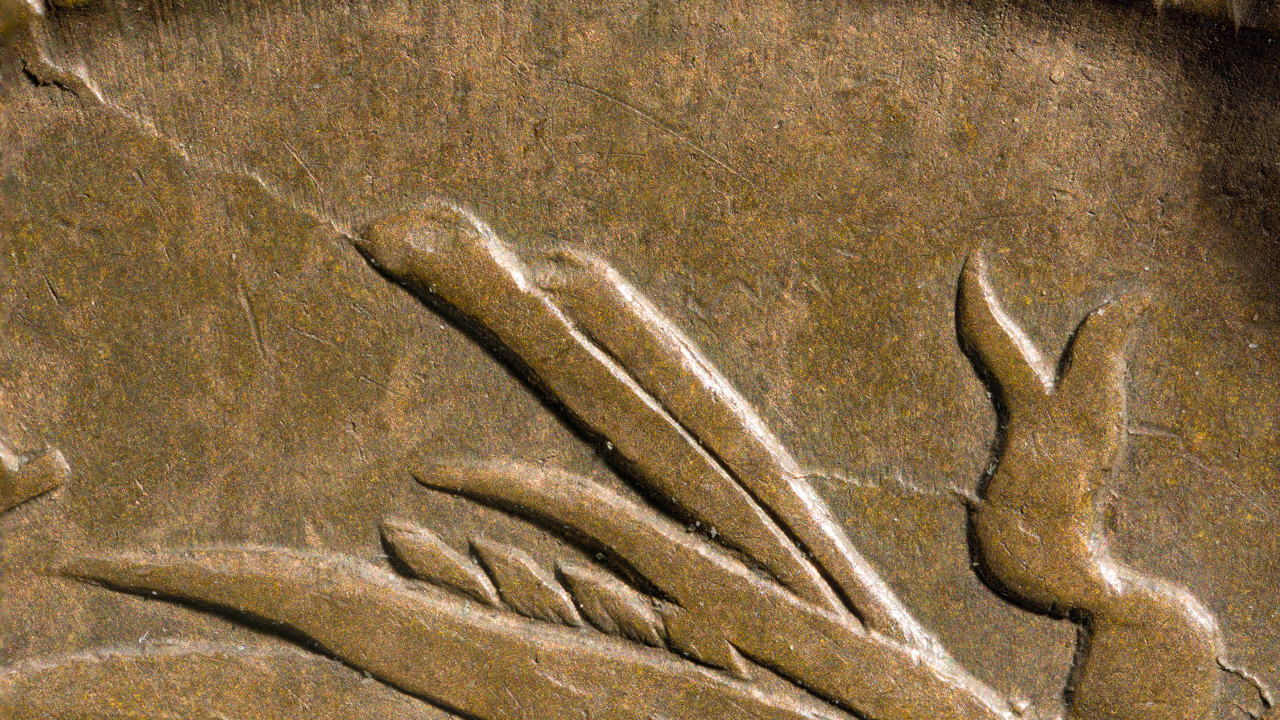
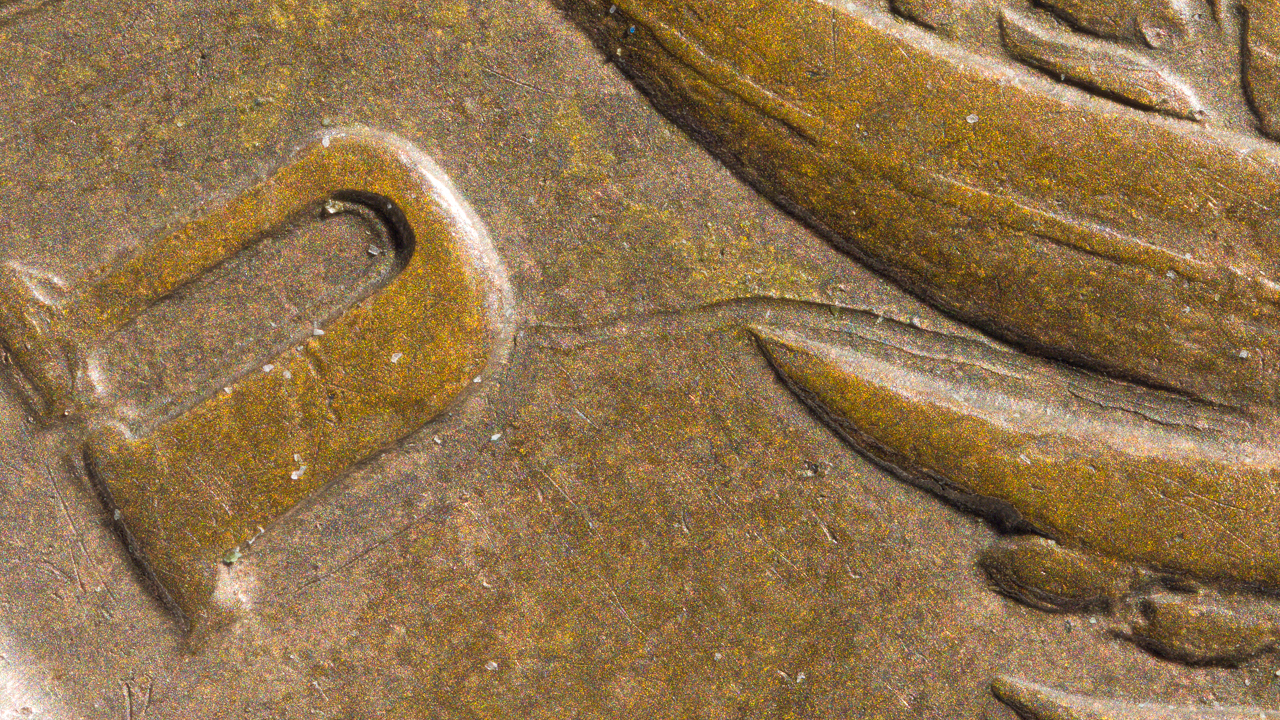
Then the doubling (with a cool optical effect that makes the word look incuse at first glance)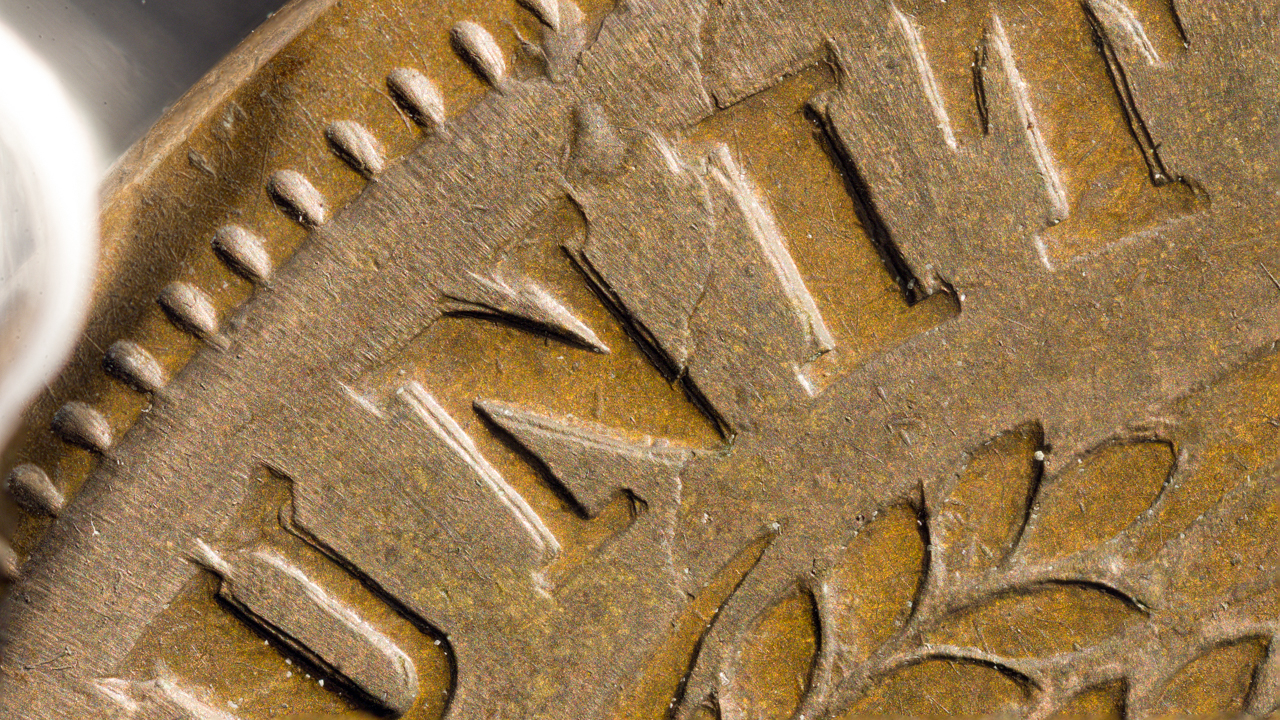
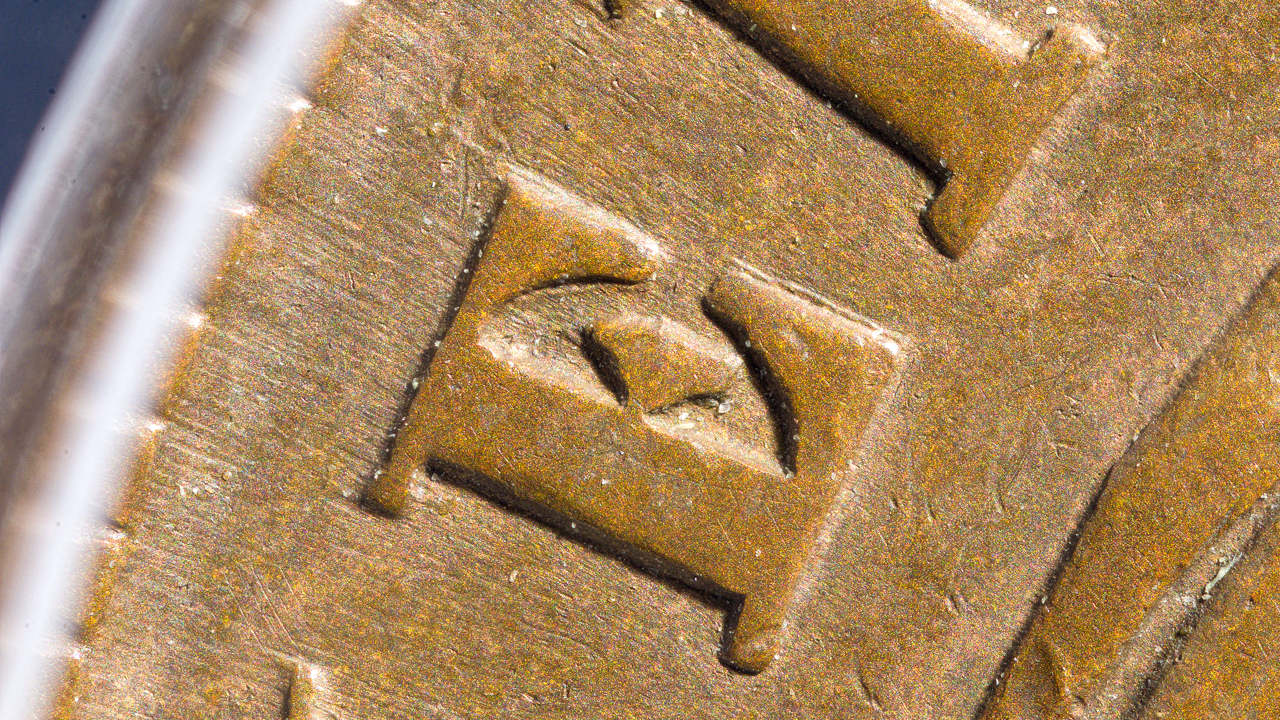
Comments
Lets start at 3 and work backwards. This type of doubling is often called Longacre Doubling, and it is not actually doubling as we understand it from the Double Die sense, which is machine doubling, but because of multiple hand strikes. Look up the term. LOTS of articles.
Back at #2, your die, in some parts was "sinking", or separating away from the crack. This is terminal. Somewhere behind the face of the striking area the crack is separating the die in the collar and the pressure from striking is causing the shift.
Last part, back at color. I don't know. I hope someone else does.
Nice pictures by the way!
“We are only their care-takers,” he posed, “if we take good care of them, then centuries from now they may still be here … ”
Todd - BHNC #242
The woodgrain look comes from a planchet with alloy streaks/impurities.
Some collectors (myself included) love this look and will pay a slight premium.
Others don't care for it.
Cool coin.
Thank you very much for the information and for the compliment on the images! it is very helpful.
That last image does have me intrigued and is the reason I mentioned possible debris. It's definitely incuse and crosses the field, but stops before the relief. It could simply be post mint damage, but is there a possibility there was a shaving on the die during striking that made the mark? It's just such a short and odd path that I'm trying to get a better understanding of what could have caused it.
Thanks again!
Thanks! Add me to the group that likes it, and it's the reason I purchased this one. What I find interesting is that the planchet only had the impurities on one side. I suppose they could float to the top when the metal was liquid, not be skimmed off, and solidify that way. That could cause them not be on the bottom side. Regardless, the effect is eye catching from my perspective.
@CPJ
When I mentioned the last image, it was the 4th of the closeups. That is not a die crack, that is PMD. I am looking at the area to the right of U, extending into the wreath.
Also, and I am not expert, but I have heard it theorized that the anomaly of the metal creating the wood-grain effect is from the rolling machines when the planchets where being rolled. The slight differences that these machines would impart with the heat and friction of compression, and the metal to metal contact sometimes would cause the planchets to react and/or leach differently. Copper is an interesting metal in that respect.
“We are only their care-takers,” he posed, “if we take good care of them, then centuries from now they may still be here … ”
Todd - BHNC #242
Thanks for clarifying on the PMD. That’s an interesting theory on the rolling machines, and it would explain how the effect ended up one sided.
The incuse lines appear to be PMD...the Die cracks are certainly there and explained above by @pursuitofliberty. Nice Two Cent piece.... I like them and feel they are under rated as collectibles...Cheers, RickO
The Bronze used in that era consisted of 95% copper and 5% zinc and tin. Within that 5% alloy the actual percentages of zinc and tin could vary, though neither one was ever supposed to be less than 1 of the 5% or more than 4.
Sometimes if the alloyed mixture was not hot enough and/or was not stirred sufficiently before the ingot was cast the zinc and/or the tin might remain as localized higher than normal clusters within the copper matrix. If the percentage of copper within that cluster fell below 90% the cluster could take on a yellowish or brassy color since it was, locally, brass rather than bronze. When the ingot was rolled those clusters were stretched out in irregular patterns.
That I can visualize in the pattern. Thanks so much for taking the time to explain!